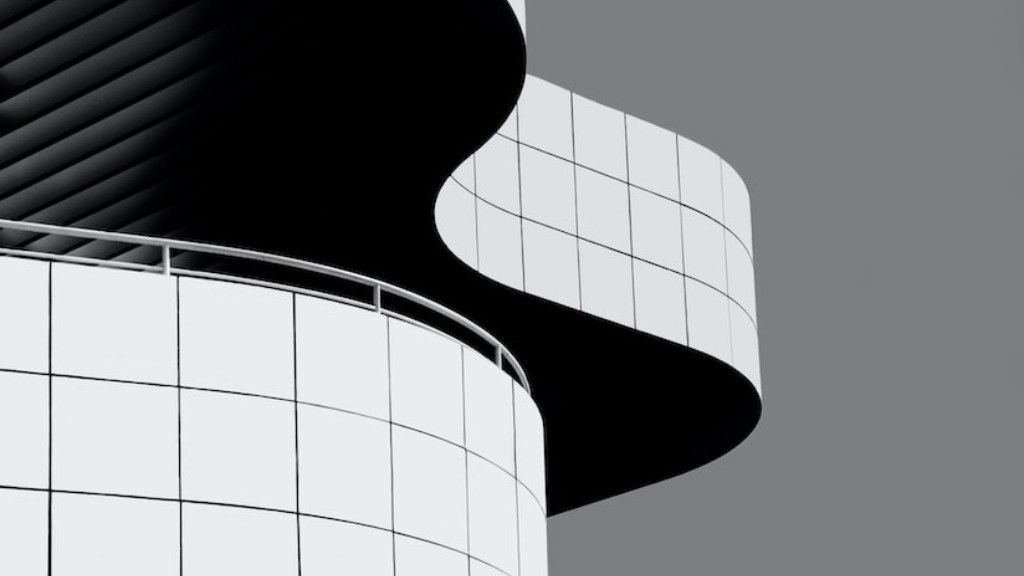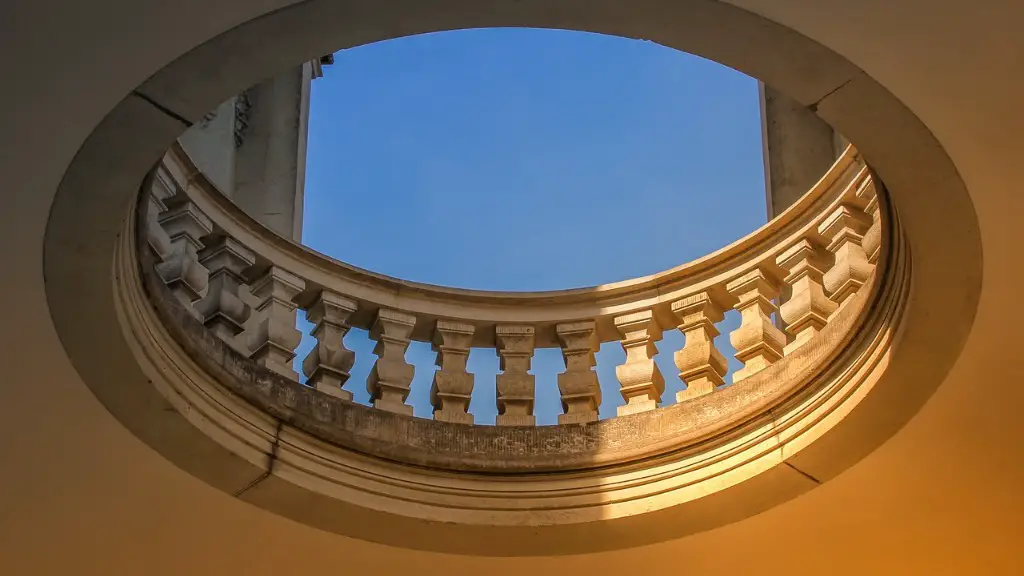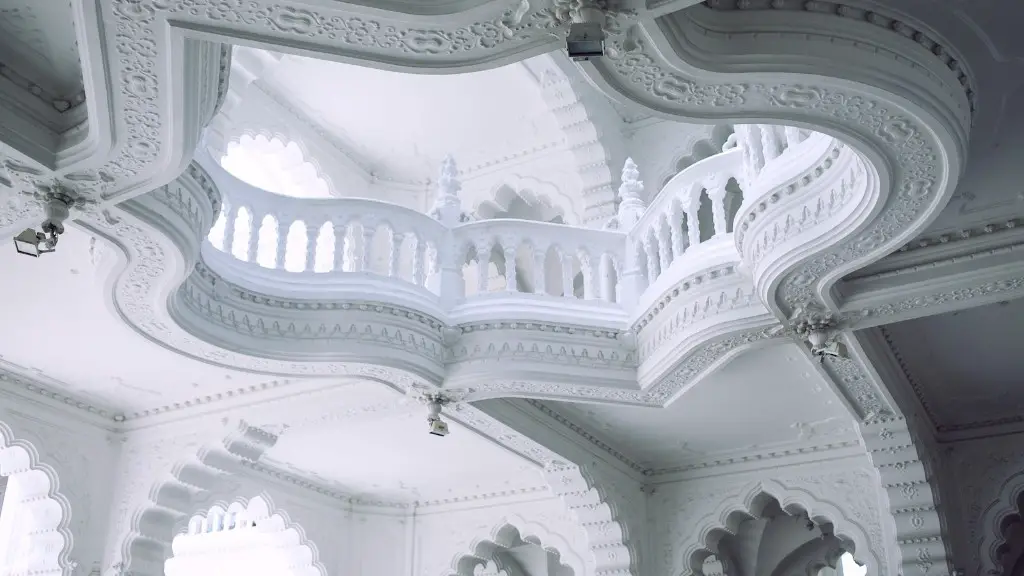De Stijl, or “The Style,” was a Dutch artistic movement founded in 1917. The group’s members included painters, architects, and sculptors, and their work was characterized by its use of primary colors, simple geometric forms, and a strong vertical and horizontal orientation. De Stijl’s influence can be seen in the work of many later artists and architects, including the Bauhaus and Le Corbusier.
De Stijl was a Dutch artistic movement that focused on simple geometric forms and primary colors. The group, which included artists such as Piet Mondrian and Theo van Doesburg, also had an impact on architecture. De Stijl architects believed that vertical and horizontal lines were the most important design elements, and they used these lines to create simple yet effective buildings.
How did De Stijl influence architecture?
De Stijl was a Dutch artistic movement founded in 1917. The group’s main principle was a reduction to the essentials of form and colour. De Stijl artists believed that this simplicity would lead to a more harmonious society. The movement was influential on architects working in the international style, as well as on the Bauhaus style and the architecture of Ludwig Mies van der Rohe. De Stijl also inspired typography and decorative arts, including furniture design.
The De Stijl movement was founded in the Netherlands in 1917 by a group of artists and architects. The group included Piet Mondrian, Theo van Doesburg, and Gerrit Rietveld. The name De Stijl comes from the Dutch word for “style.”
The De Stijl movement was based on the principle that the artist should reduce the work of art to its essentials, or its geometric structure. The group believed that this reduction would lead to a purer, more harmonious form of art.
De Stijl artists used straight lines, squares, and rectangles, combined with asymmetrical compositions and a limited palette of primary colors, black, and white. They believed that this simplicity would create a sense of order and harmony.
The De Stijl movement had a significant influence on the development of Modernism in the arts.
What is the most famous De Stijl architecture
The Rietveld Schroder House is one of the most prominent examples of the De Stijl movement. Designed by Dutch architect and furniture designer Gerrit Rietveld, the house is a radical example of modern architecture. Not only does it utilize a completely different approach to design than traditional houses of the time, but it also eschews traditional ideas about function and form. Instead, the house is designed to be a space that is both flexible and comfortable, with a focus on simplicity and functionality.
De Stijl was a Dutch artistic movement founded in 1917. The artists associated with De Stijl believed in a purer form of geometry, consisting of forms made up of straight lines and basic geometric shapes. De Stijl had a major influence on the development of art and architecture in the 20th century.
What is a major characteristic of De Stijl design?
De Stijl was a Dutch art movement that began in 1917. The De Stijl artists were known for their Neoplasticist style, which was an abstract use of geometric shapes, specifically rectangles, and primary colors, along with black and white.
De Stijl art is a type of art that primarily uses the three primary colors (red, blue, and yellow), the three primary values (black, gray, and white), and horizontal and vertical lines. It can be seen in paintings, furniture, and architecture.
What is De Stijl design style?
De Stijl was a movement in art that began in the Netherlands in 1917. The name De Stijl comes from the Dutch word for “style”. The De Stijl movement was founded by two artists, Piet Mondrian and Theo van Doesburg. The De Stijl style of art is based on a strict geometry of horizontals and verticals. The De Stijl artists believed that art should be simple and abstract. They believed that through simplicity and abstraction, art could express universal truths. The De Stijl movement had a profound influence on the development of abstract art in the 20th century.
As a whole, the De Stijl movement had a profound impact on a range of fields beyond just the visual arts. In particular, it had a significant impact on architecture. The De Stijl architects aimed to create a close collaboration between the different arts, and this is something that was realized in the architectural style that emerged from the movement. This style was characterized by a focus on simplicity and abstraction, as well as a strong use of geometry. It was a highly influential style that would go on to shape the course of modern architecture.
What was the goal of De Stijl
De Stijl art is a movement that was founded in 1917 by Theo van Doesburg, Gerrit Rietveld and others. The movement’s aim was to create a new art form that would be based on the principles of artistic freedom, simplicity and functionality. De Stijl art is one of the most influential movements in modern art history.
The De Stijl and Bauhaus movements were similar in that they both believed in function over form and that art should be accessible to everyone. However, the De Stijl movement was more constrained in its use of shape and color, while the Bauhaus was more open to design innovation. The Bauhaus was also more economically successful, due to its focus on mass production.
What are the colors of De Stijl?
De Stijl artists were influenced by cubism and futurism and sought to reduce visual composition to its most basic elements in order to express universalities. They defined those basic elements as horizontal and vertical lines and a simplified palette consisting of only black, white, and primary colors. De Stijl artists believed that by reducing composition to its simplest form, artwork could express universal truths.
Rietvelt’s Schröder House is a prime example of a total De Stijl environment. Every aspect of the house, from the layout to the furniture, reflects the De Stijl principles of simplicity and abstraction. The result is a clean, ordered space that feels both modern and timeless.
What three main Colours would you associate with the design movement De Stijl
The Dutch art movement known as De Stijl (pronounced “day style”) was founded in 1917 by Piet Mondrian and other artists. They were interested in creating a new art form that would be based on geometric shapes and primary colors. The name De Stijl comes from the Dutch word for “style,” and the group was also influenced by the Dutch word “stijl,” which means “purpose” or “harmony.”
The De Stijl artists were interested in ideas of harmony and order in art. Three colors dominate the movement: red, yellow, and blue. The art movement was also influenced by Cubism and its abandonment of realistic representation of things. Things in paintings no longer had to look like they do in real life.
De Stijl had a major impact on the development of Modern art, and its influence can still be seen in many contemporary artists’ work.
De Stijl, which means “The Style” in Dutch, was a group of artists who all shared similar ideas about art. They believed in simplicity and abstraction, and their artworks were all characterized by these qualities. Additionally, the members of De Stijl believed in the power of art to transform society and empower individuals. Thus, their art was not only aesthetically pleasing but also meant to send a message about the world around them.
How did De Stijl affect society?
De Stijl was a Dutch art movement founded in 1917. The members of De Stijl, including Piet Mondriaan, Gerrit Rietveld, and Bart van der Leck, intended to modernize society with their “new art”. Their approach was to achieve maximum simplicity and abstraction in painting, product design, and architecture. De Stijl had a significant impact on 20th-century art, design, and architecture, and its legacy continues to this day.
De Stijl was a major force in the art world in the early 20th century, and its influence can still be seen in many aspects of modern design. The movement was particularly influential in architecture, interior design, graphic design, and typography, and its influence can still be seen in many Dutch design traditions.
What fields were strongly influenced by the De Stijl movement
De Stijl was a Dutch artistic movement founded in 1917. The group was particularly influenced by the work of Piet Mondrian, who developed a distinctive style of abstract painting using geometric forms and primary colors. In addition to Mondrian, other key members of De Stijl included the architects Gerrit Rietveld and J.J.P. Oud, and the painter Theo van Doesburg.
De Stijl had a significant impact on the development of modern art, particularly in the fields of painting, architecture, and design. The group’s aim was to create a unified style that could be applied to all forms of art, and their work had a major influence on the Bauhaus and Art Deco movements.
The group was interested in bringing art and architecture closer together, and they believed that their orderliness and use of simple geometric forms would help to achieve that goal. De Stijl became an important influences on the Bauhaus and on the development of Modern architecture and design.
Final Words
De Stijl, or “The Style,” was a Dutch artistic movement founded in 1917. The style is characterized by its use of simple geometric forms and primary colors. De Stijl embodied the group’s utopian ideals of simplicity and universality, and its members believed that by reducing art to its most basic forms, they could create a new visual language that would be understood by all. De Stijl had a major impact on the development of Modern architecture and design, and its influence can still be seen in the work of many contemporary artists and designers.
De Stijl in architecture is a movement in architecture that started in the Netherlands in the early 20th century. The De Stijl movement was a reaction to the ornate, over-decorated architecture of the late 19th century. Instead, De Stijl architects advocated for a return to simplicity and abstraction. One of the most famous De Stijl buildings is the Rietveld Schröder House in Utrecht, which was designed by Dutch architect Gerrit Rietveld in 1924.





